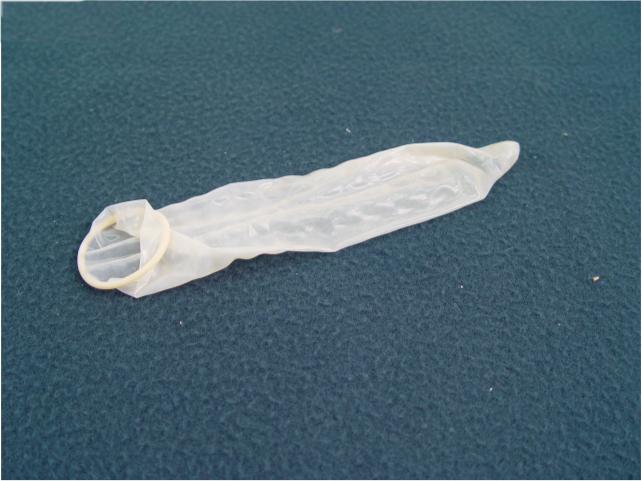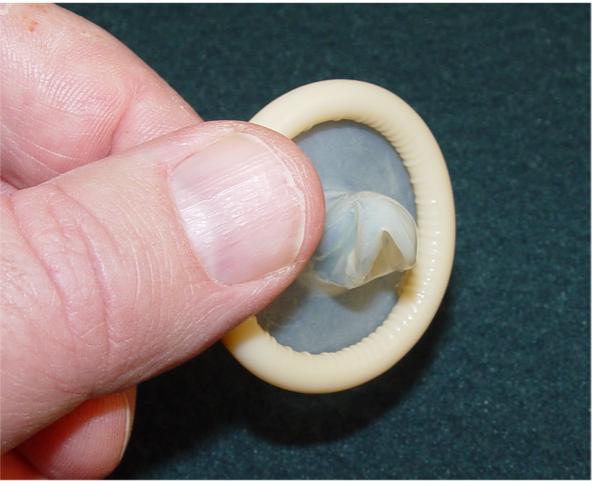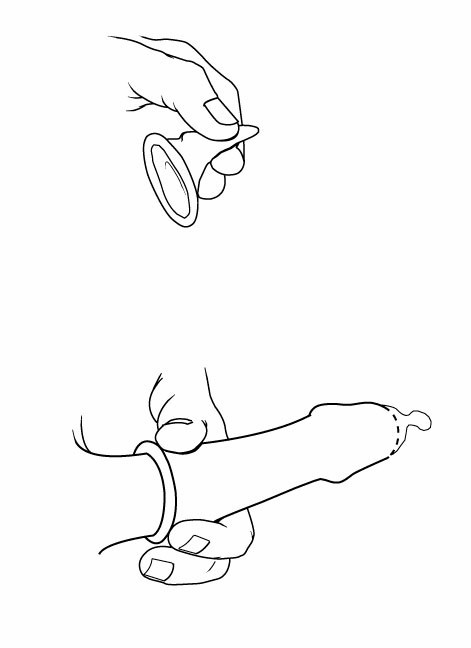|
Condoms |

|
 A condom is a latex or animal skin sheath which fits over the penis.
During orgasm, with ejaculation of semen, the sperm are trapped within the condom,
preventing pregnancy.
A condom is a latex or animal skin sheath which fits over the penis.
During orgasm, with ejaculation of semen, the sperm are trapped within the condom,
preventing pregnancy.The condom is very effective, with annual failure rates of about 2%. Reasons for failure include non-use, breakage of the condom during intercourse, or loss of the condom. This loss most often occurs after ejaculation as the penis is returning to its' non-erect size. To prevent loss of the condom at this time, it is important to hold onto the base of it when the penis is withdrawn from the vagina. Making sure to roll the condom completely down (rather than partway down) over the erect penis will also help prevent its loss during intercourse. Use of high-quality, new condoms is also advisable. Tiny pinholes in the condoms are not likely to be a cause for failure and the process of checking for such tiny openings is likely to weaken the condom, increasing the chance for breakage.
Some condoms are pre-lubricated. While this makes them somewhat more difficult to put on (they are slippery), the lubrication increases their heat and surface contour conduction, making their use seem less "artificial," and improving sensitivity. For couples in whom vaginal lubrication is insufficient, lubricated condoms can be helpful. Use of petroleum jelly as a lubricant is probably not a good idea as latex is soluble in petroleum products and the lubricant may weaken the condom.
Some condoms are packaged with a spermicide (nonoxynol-9). This addition increases their effectiveness somewhat, but condoms are still considered about 98% effective. That is, 2 women out of 100 will become pregnant each year if condoms are used as contraception.
Some couples place the condom on the male just prior to his orgasm, but after considerable penetrative sexual activity has already taken place. To maintain a high level of effectiveness, the penis should not come in contact with the vulva or vagina prior to placement of the condom. During sexual arousal but prior to orgasm, a small amount of clear liquid may appear at the tip of the penis. This liquid can contain both sperm and STDs. If the penis were to enter the vagina at this time, both pregnancy and infection are possible, even though male orgasm has not yet occurred.
Some condoms have a reservoir tip to collect semen after ejaculation. Others have no such reservoir. For those condoms, it is a good idea to pinch the tip of the condom before applying it, creating an air-free space that can function as a reservoir tip.
The condom should be rolled completely down to the base of the penis before use
In addition to providing contraception, the condom also provides reasonably good protection against some sexually-transmitted diseases.The condom provides y good protection against HIV, chlamydia, gonorrhea and syphilis...those STDs transmitted via semen or body fluids. The condom does not offer much protection against such STDs as condyloma (warts) or herpes, because these viruses are transmitted mainly through skin-to-skin contact and the condom does not totally cover all areas of intimate skin contact in the male, nor does it cover all of the vulnerable tissues in women. Condoms are also used to prevent STD transmission during oral sex.
Condoms can be applied by either partner to the erect penis. It is nearly impossible to apply to a flaccid penis and would not likely remain in place, even if it were possible.

